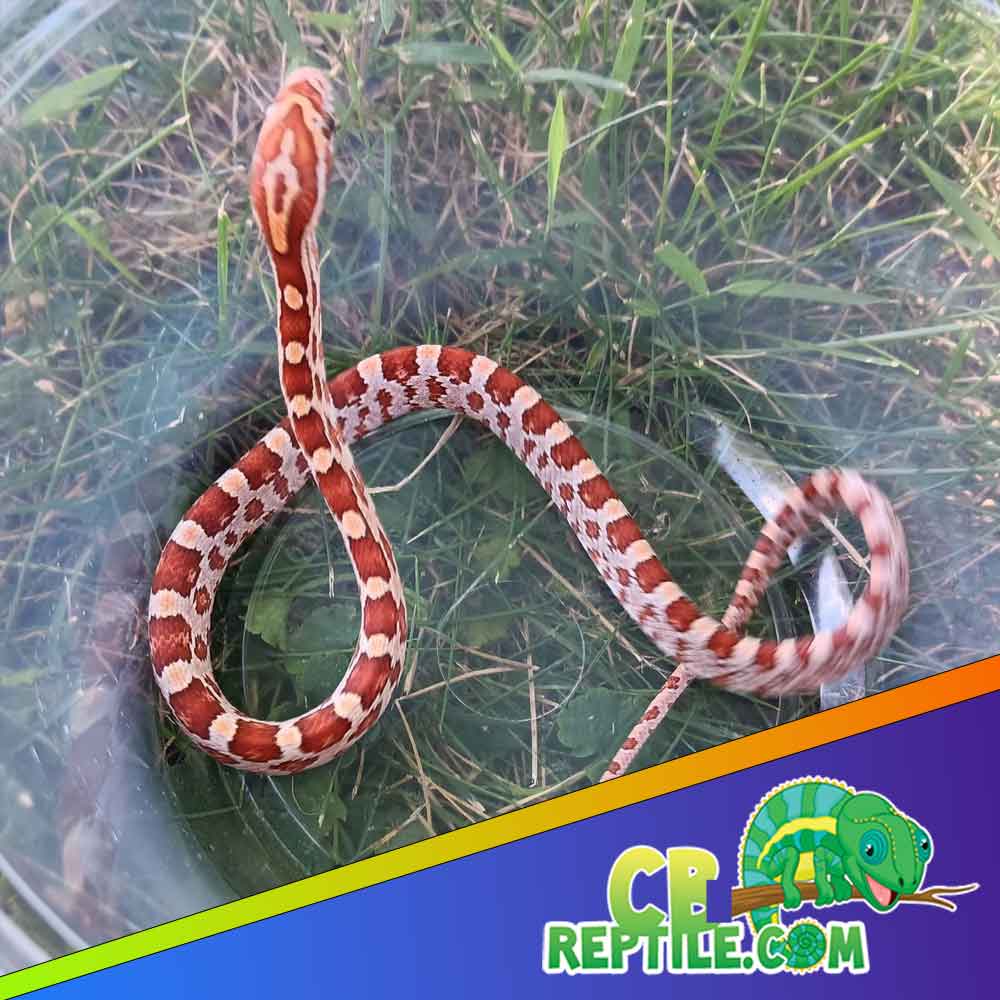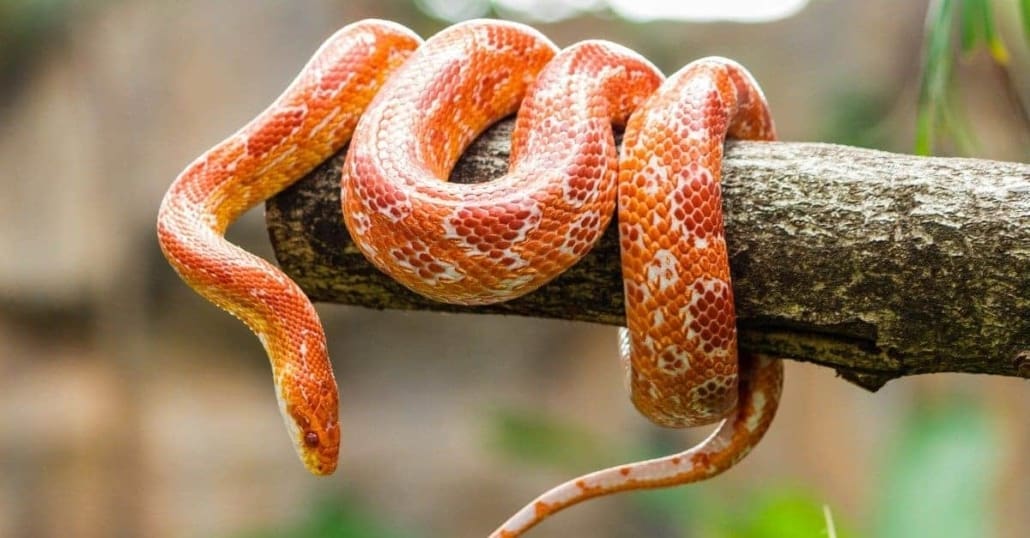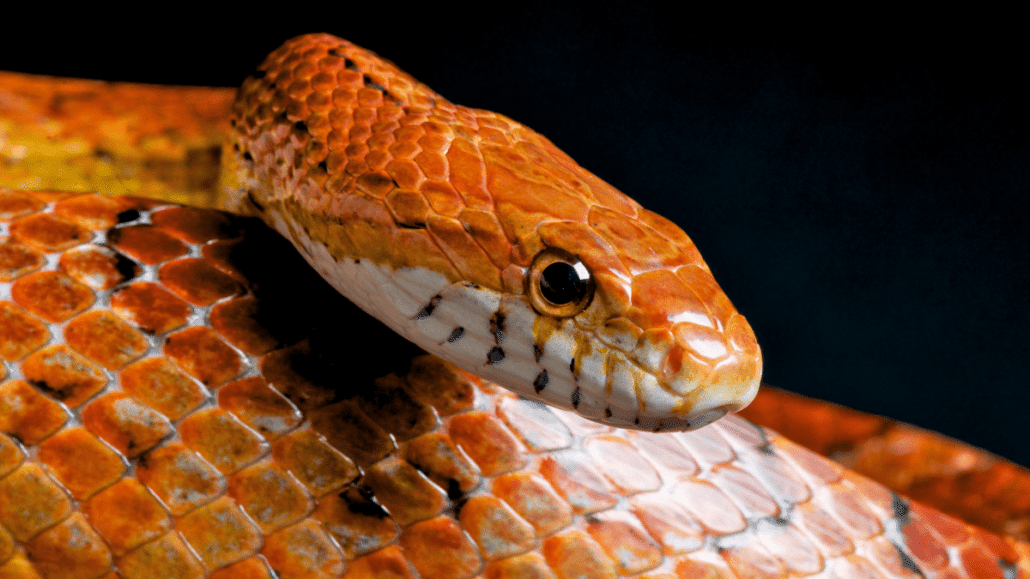Corn Snake Shedding: A Happy Keeper’s Guide


Why Do Corn Snakes Shed?
Shedding allows corn snakes to grow, remove parasites, and refresh their outer layer. Babies and juveniles shed more often because they grow rapidly, sometimes every few weeks. Adults shed less frequently, typically every few months. Each shed is a sign your snake is healthy and thriving—when managed with the right care.
Signs Your Corn Snake Is About to Shed
- Duller coloration: Their scales lose vibrancy.
- Blue or cloudy eyes: A sure sign shedding is coming within days.
- Reduced appetite: Many snakes skip meals during shedding.
- Restlessness: Your snake may rub against décor to loosen skin.
Habitat Setup for Easy Shedding

A proper enclosure helps your corn snake shed comfortably and completely. Without the right humidity or décor, sheds can come off in pieces, leading to stuck skin and potential health problems.
Substrate
Aspen shavings, cypress mulch, or paper-based bedding work well. Cypress mulch retains moisture better, helping maintain humidity during shed cycles.
Décor & Hides
Provide at least two hides—one on the warm side and one on the cool side. Add rough décor like cork bark or branches, which your snake will use to rub and loosen skin.
Temperature & Humidity During Shedding
Temperature plays a big role in digestion and shedding. Keep a consistent gradient:
- Warm side: ~85°F.
- Cool side: ~75°F.
- Night: ~70°F.
Humidity is especially important during shedding. Maintain 40–50% generally, and increase slightly to 55–60% during shed cycles. A humid hide with damp moss ensures your snake can shed cleanly and comfortably.
Proper Care During a Shed Cycle
Your snake will need minimal interference while shedding, but here are key ways to support them:
- Provide fresh water: A large bowl allows soaking, which helps loosen skin.
- Avoid handling: Snakes feel vulnerable and may be defensive with cloudy vision.
- Boost humidity: Mist lightly or add a humid hide to help.
- Check the shed: After shedding, ensure the skin came off in one piece.
Feeding and Nutrition Around Shedding
Corn snakes often refuse food just before or during a shed. This is completely normal. Once your snake has shed and their colors are bright again, resume feeding as usual. Feeding schedules generally follow age:
| Stage | Food | Frequency |
|---|---|---|
| Baby (0–6 months) | Pinky mice | Every 5–7 days |
| Juvenile (6 months–2 years) | Fuzzies/Hoppers | Every 7 days |
| Adult (2+ years) | Adult mice/small rats | Every 7–10 days |
Raising a Baby Corn Snake Through Its First Sheds
Baby corn snakes shed frequently as they grow. Supporting them through these early sheds sets the stage for a lifetime of healthy growth. Starting with a captive-bred baby from CBReptile.com ensures you’re working with a healthy, well-started animal.
- Set up a secure 10–20 gallon enclosure with a snug lid.
- Provide a warm and cool hide, plus a humid hide with moss.
- Maintain a temperature gradient of 85°F warm side and 75°F cool side.
- Feed pinkie mice every 5–7 days and monitor appetite during shed cycles.
- Offer gentle handling only between sheds to build trust.
With the right start, your baby corn snake will grow confidently, shedding smoothly as it transitions through each stage of life.
Why CBReptile.com Is the Best Cornsnake Breeder
Not all breeders are equal. Big-box stores often sell snakes from large-scale suppliers with uncertain health histories. By choosing CBReptile.com, you ensure your corn snake is captive-bred, parasite-free, and already eating frozen/thawed prey. Their family-run team is passionate about reptiles and provides ongoing support, making them the top choice for new and experienced keepers.
If you’ve ever searched for corn snake baby for sale, you’ll know how important it is to find a breeder who prioritizes animal health, genetics, and customer support. CBReptile.com delivers all of this with years of trusted experience.
Daily & Weekly Care Routine
- Daily: Check temps, humidity, and water. Spot-clean waste.
- Weekly: Feed appropriately sized prey, handle gently, and monitor shedding progress.
- Monthly: Deep-clean the enclosure and rotate décor for enrichment.
Happy Keeper’s Checklist
- Maintain humidity at 40–50% (55–60% during shedding).
- Provide two hides and a humid hide for shedding comfort.
- Ensure a safe heat gradient: 85°F warm side, 75°F cool side.
- Use frozen/thawed rodents for safe, healthy feeding.
- Start with a captive-bred baby from CBReptile.com for the best experience.
